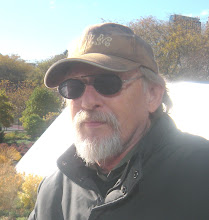The Four Energies
Our International Tai chi Alliance has been doing a hybrid
form possibly called “The Four Energies.” I asked if there was a source video
for this. There was, once upon a time, on a Turkish web site no longer
inexistence, I guess. For me, it is an interesting as a way of concentrating on
some of the essentials without the distraction of learning the whole form…even
abbreviated versions like Yang 8. However, I have to keep asking myself, why
not just practice getting “Grasp the sparrow’s Tail” right. All these
“energies” are in it except a shoulder strike (which follows in Yang forms such
as the Long Form or the Short Form. The Four Energies are Peng (ward off), Lu
(roll back), Ji (press), and An (push). There is also Kao (shoulder strike).
Yes, I know, that’s five, but ward off happens in this form as part of roll
back and press. As I said before, Grasping the Sparrow’s Tail has most of this
but in a sequence: ward off, roll back, press, push. The Four Energies
separates each energy as individual moves and adds lateral movements between
each, turning the person 180 degrees in a square. Sorry I can’t point you
toward a video of this. I did find a nice explanation of the Thirteen Postures
(8 energies and 5 steps) on Cathryn Lai’s Tai Chi & Qi Gong Studio web posting:
http://cathrynlai.com/pdf/13%20Tai%20Chi%20Essentials.pdf
Of ward off Lai says, “the nature of this movement is
expansive. It seeks to occupy space and bounce off obstacles.” Concerning roll
back we learn from her that, “It creates a vacuum or an absence. It can draw
the opponent in, or with very little effort, parry, yield and disappear from
the opponent’s attack.” With press, “It is best used close in, as a way to gain
some space from an opponent who is smothering you.” And, “ ‘Push’ grants you
more physical space than press, often resulting in your opponent hurtling out
of your space while losing his or her footing....It also reminds you to yield
in the midst of tension, so that you can neutralize negative energy and turn it
around for your betterment.” Of the shoulder strike Lai says, “It is the
energetic pair of the ‘elbow’ gate. It is used for the tightest of spaces, when
you have no room to chamber for a hand strike or kick.”
More of interest on the energies can be found on Tim
Cartmell’s Shen Wu Martial Arts web site, http://shenwu.com/taichi.htm.
Quoting him on the energies of the Eight Techniques: ward off, roll back,
press, push, pluck, split, elbow and body stroke (peng, lu, ji, an, cai, lie,
zhou, kao), we read that:
“In its broadest sense, ward off energy can he applied to
the whole body. It is the energy resulting from proper alignment and relaxation
which gives the Tai Ji Quan fighter the elasticity and springiness necessary to
fight. In a stricter, technical sense, ward off is the energy which supplies
buoyancy and supports weight (as soft and flexible water is able to support a
massive ship). Roll back is energy which moves incoming force past one's body
toward the rear (as a revolving door gives way and pivots around its center).
Press is the force which rebounds from the ground up in a pulse and bounces the
opponent away from the body (as a rock bounces off the taught head of a drum).
Push is a force which puts pressure downward (like the force used when you lift
your body out of a pool by pressing the palms down on the outside deck).”
Of Kao (shoulder strike) Cartmell says, “Body stroke is
whole body ward off power channeled through some part of the torso, usually the
shoulder (think of breaking a door down by leaning into it with your
shoulder).”
That is what I have found in writing about the Four Energies
as we practice in this hybrid form. Perhaps we will move on to practice cai,
lie, zhou, and kao in a further version.



No comments:
Post a Comment